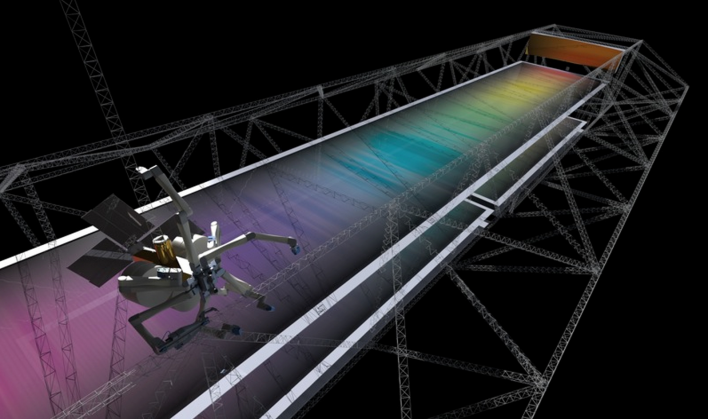NASA Ramps Up Efforts to Bring Manufacturing to Outer Space
The thought of building structures out in space brings to mind futuristic sci-fi films like Star Wars or Star Trek. However, this idea is not just for fantasy movies anymore. NASA has plans of building their own structures that could revolutionize the way manufacturing is conducted in the vastness of space.
 Right now it’s common to build something on Earth, put all of the pieces inside of a rocket, and then launch that rocket into space to assemble the product up there. However, NASA and Tethers Unlimited are working together to change that paradigm. NASA has already made headlines with its work in partnership with Made in Space, which seeks to develop a 3D printer that can assist astronauts within a spacecraft. But these printers are designed to solve small problems. Now, the Agency's targets are fixed on a much larger manufacturing goal.
Right now it’s common to build something on Earth, put all of the pieces inside of a rocket, and then launch that rocket into space to assemble the product up there. However, NASA and Tethers Unlimited are working together to change that paradigm. NASA has already made headlines with its work in partnership with Made in Space, which seeks to develop a 3D printer that can assist astronauts within a spacecraft. But these printers are designed to solve small problems. Now, the Agency's targets are fixed on a much larger manufacturing goal.
NASA just awarded Tethers $500,000 to continue developing a robotic 3D printing and assembly system known as SpiderFab. It’s believed that this system, once fully operational, could build structures over half a mile wide in orbit.
Instead of stuffing components and equipment inside of a rocket, which can take up large amounts of room, materials like fiber and polymer can be densely packed inside of a rocket to 3D print components while out in space. This is hugely beneficial in that it cuts down on costs.
“Once on-orbit, the SpiderFab robotic fabrication systems will process the material to create extremely large structures that are optimized for the space environment,” said Rob Hoyt, Tethers Unlimited CEO and Chief Scientist. “This radically different approach to building space systems will enable us to create antennas and arrays that are tens-to-hundreds of times larger than are possible now, providing higher power, higher bandwidth, higher resolution, and higher sensitivity for a wide range of space missions.”
With the $500,000 that they have just received from NASA, Tethers Unlimited plans on putting that money toward developing new ways to build support structures and large solar arrays in orbit. They are working on building parts, such as antennas, as well.
“Once we’ve demonstrated that it works, we will be well on our way towards creating football-field sized antennas and telescopes to help search for Earth-like exoplanets and evidence of extraterrestrial life,” Hoyt said.










